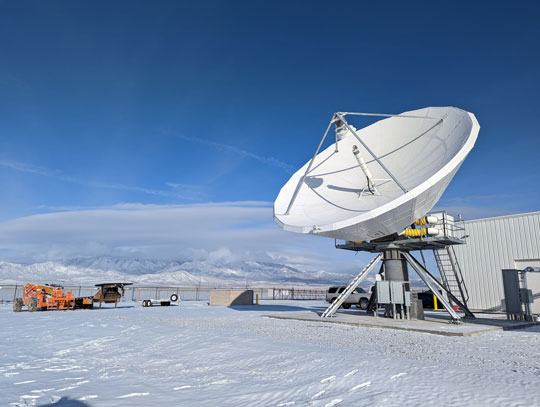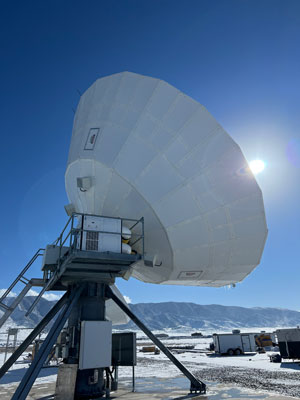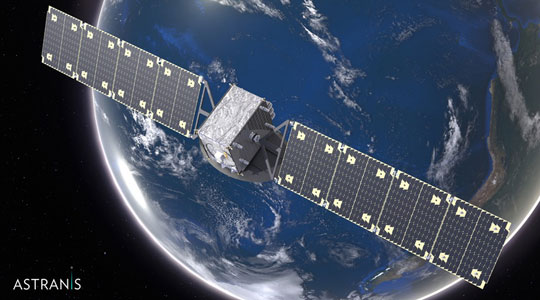
Constellations spoke with Shawn Williams, Vice President of Government Affairs and Strategy at Pacific Dataport (PDI) about its business model for delivering broadband to remote, underserved markets. Specifically, PDI is building its Aurora Network Project to serve rural Alaskans with affordable and reliable broadband. At the heart of this network is PDI’s soon to be launched Aurora 4A MicroGEO, which will make its lower cost business model possible.
In PDI’s vernacular, ‘digital deserts’ exist all over the world; the places that either have no capacity, not enough, or no one interested in providing it. Typically cost and inaccessibility are the biggest hurdles.
In Alaska, where everything is more expensive, Williams explained that laying terrestrial fiber or microwave can cost over $125,000 per mile, and involve traversing hundreds of miles of tundra, going over and around mountains, lakes, and streams. That leaves almost a third of the state’s rural citizens ‘underserved’ with no access to broadband at all, or according to the FCC definition, no access to reliable broadband to support real-time interactive applications, which it benchmarks at a minimum threshold of ‘25 down and three up,’ meaning 25 Mbps download and 3 Mbps upload (25/3).
Even when broadband is available it can be prohibitive. Williams shared how 25 by 3 broadband recently offered off the northern coast of Alaska costs $499 a month. Rural Alaska schools and health clinics often pay $40-$60,000 per month for 25/3 service for each school or health clinic.
PDI figured there was a better solution. “Dropping a user terminal in the community and connecting satellite, you remove all of those problems, especially when it comes to environmental impact studies,” said Williams.
PDI knows this market. Its sister company, Microcom, has been providing satellite broadband and TV to Alaskans for almost 40 years. As a reseller, it started to realize that satellite owners were running out of capacity, limiting its options. PDI was created to build its own satellite network to provide affordable cellular and broadband backhaul.

All the right stuff
But to bring its low-cost model to fruition, PDI needed all the right ingredients; the satellites, ground segment and antenna, but first the orbital slots. Williams explained how connecting communities is a long journey, and the first step in building a satellite broadband network for Alaska, it needed the right lookout.
“We knew we needed to secure two orbital slots for the two satellites that are part of our Aurora network, and that directly south of Alaska would be best.” Not being a high demand area worked to PDI’s benefit. It was able to procure two slots fairly quickly at 163 degrees and 154 degrees west, which Williams said may have been the easiest step of all.
With an ideal position for the satellites, next PDI needed an ideal location for the matching ground system. “The LBiSat location in Eagle Mountain, Utah was perfect,” said Williams. “They have almost 100% clear sky days and near perfect atmospheric weather conditions,” as well as access to low-cost redundant fiber internet through multiple providers.
To ensure mission reliability, PDI required an antenna and its components with a long and successful operating history, and redundancy for the critical systems, including tracking. Williams explained how the antenna’s sub reflector tracking adds a Z access component that improves performance over traditional pedestal tracking, automatically refocusing the antenna in the event of thermal contraction and expansion.
The last and essential piece; a smaller, more affordable satellite that could pair with the antenna to support a more economic model. PDI commissioned a MicroGEO satellite built by Astranis in San Francisco. “Our satellite is about 7.5 gigabits per second. We're pretty excited about that. The size of the satellite, just being smaller, translates to less weight and ultimately, less cost to launch.”
 Satellite orbiting Earth. Credit: Astranis
Satellite orbiting Earth. Credit: Astranis
A smaller footprint
About the size of a commercial dishwasher, the MicroGEO weighs about 300 kilograms compared to a typical GEO satellite that weighs several thousand. Fitting into a plastic composite box, it will be transported to Cape Canaveral, where it'll go up on a SpaceX Falcon Heavy in Q4 2022.
“Our goal is to make sure that we do this the most economical way possible, because that directly translates to lower prices for our customers and lower prices ultimately to the consumer.”
Williams explained how the MicroGEO makes it possible for PDI to start out with a more affordable first step, allowing it to generate a revenue flow in building its Aurora Network. “That is more attractive to investors and partners, especially as we look to fund our second, bigger satellite,” a more costly Boeing Flexa, delivering over 100 gigabytes per second.
The MicroGEO uses traditional ground station equipment and normal commercialization processes. Post-launch it will go through alpha and beta testing and in a month or two will be up and ready for commercial service. “We expect the process to go very fluidly. We're excited to get it up in the air and start providing service to our customers.”
When the Aurora Network Project is complete, Williams expects significant benefits to the Alaskan communities it will be providing affordable capacity to, including tribes, tribal consortiums, schools, health clinics, and Alaska telecoms.
The new model
“Our wholesale pricing will be a fraction of what everyone's paying right now. In fact, it will bring Alaska very close to the wholesale pricing that you see in the lower 48.”
With about one third of Alaska’s 737,000 residents considered unserved or underserved, “when you have a very targeted group of people and you don't have $500 million to spend on a satellite, this MicroGEO option is probably the most economical way to reach those people.”
Williams related how one of their clients, Chief Mike Williams from the Akiak Native Community, a very remote community of about 400 residents, said he equates broadband coming to his village to when electricity came. While most people take utilities such as electricity for granted, Williams explained how connectivity opens up a ton of new opportunities, everything from telehealth to better education. “If someone wants to go to college or earn a vocational degree, those are the kinds of things that become possible.”
Click here to listen to the full interview.
